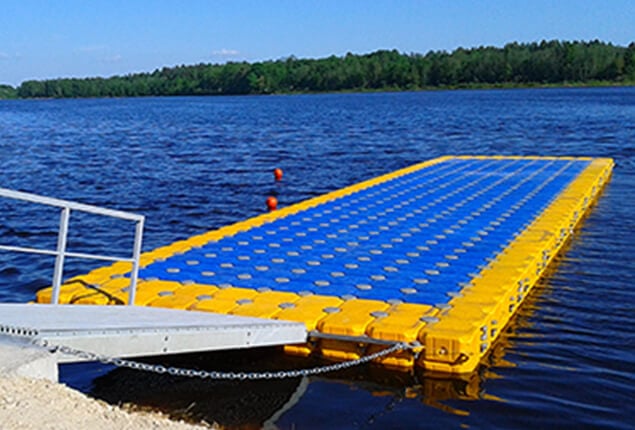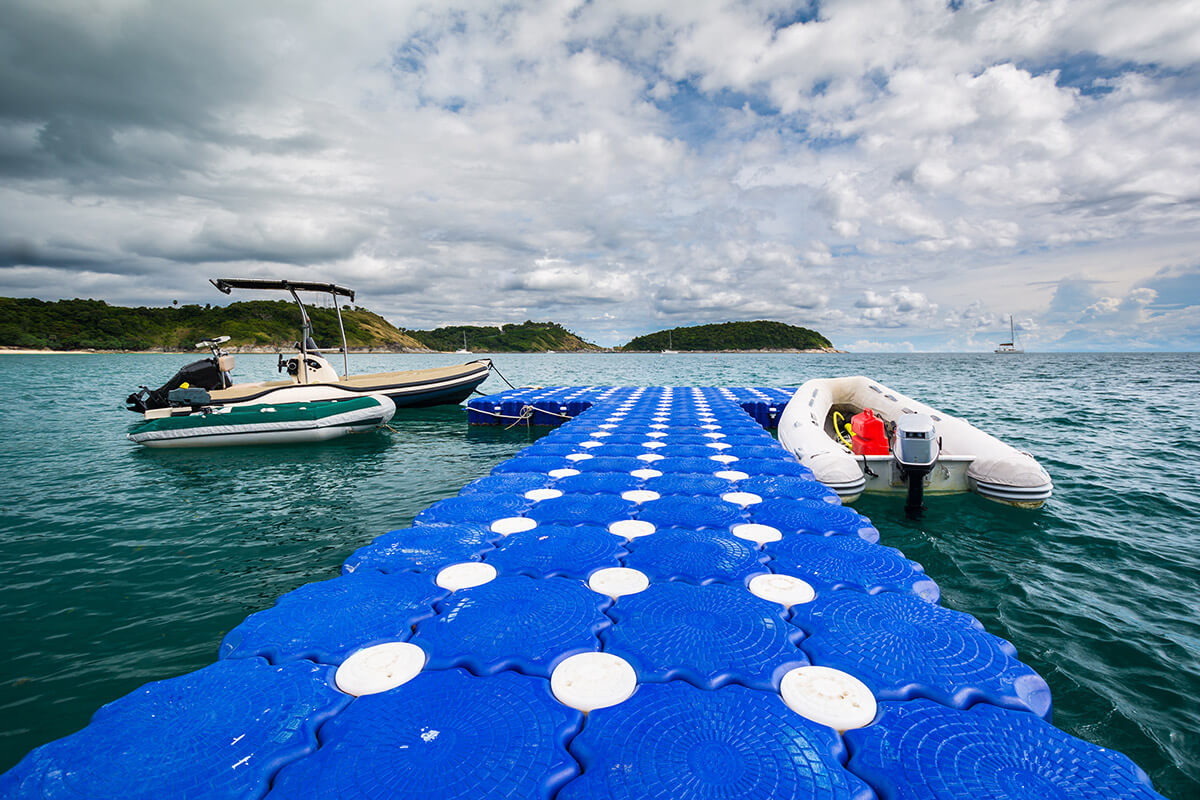Optimizing Your Outdoor Space with Specialized Floating Dock Providers
Optimizing Your Outdoor Space with Specialized Floating Dock Providers
Blog Article
Produce the Perfect Docking Option With Floating Docks
Floating docks present a versatile solution for a selection of maritime requirements, adapting seamlessly to varying water degrees and varied vessel kinds. As we discover the vital components that add to the efficiency of floating docks, a number of key aspects relating to stability and maintenance will certainly arise, elevating questions regarding exactly how to maximize your docking experience.

Benefits of Floating Docks
Floating docks deal countless advantages that make them an optimal selection for various maritime applications. Among the main benefits is their adaptability to altering water levels. Unlike taken care of docks, floating docks increase and fall with the trend, ensuring constant accessibility for vessels. This feature is specifically crucial in locations vulnerable to significant tidal variations or seasonal water level modifications.
Additionally, floating docks are typically less complicated and quicker to mount compared to conventional fixed structures. Their modular design permits uncomplicated setting up and disassembly, promoting upkeep and relocation when needed. This adaptability is particularly advantageous for short-term applications or in settings where conditions may change.
Floating docks also often tend to be much more eco friendly, as they minimize interruption to the seabed and bordering marine environments. Their buoyant nature reduces the threat of damage to aquatic life, promoting a much healthier atmosphere. These docks can be personalized to suit various vessel sizes, making certain that they satisfy details functional requirements.
Eventually, the mix of adaptability, simplicity of installment, and environmental factors to consider makes floating docks a very efficient service for a vast array of maritime requirements.
Picking the Right Products
Choosing the suitable products for floating docks is essential to guarantee longevity, security, and longevity. The choice of materials straight influences the dock's efficiency in various environmental conditions, consisting of exposure to water, sunlight, and prospective wear from marine web traffic.
Common materials utilized for floating docks consist of aluminum, wood, and high-density polyethylene (HDPE) Light weight aluminum is light-weight, corrosion-resistant, and needs very little maintenance, making it an outstanding selection for longevity. Its preliminary cost can be greater compared to various other materials.
Timber, while visually appealing and giving a standard look, can be vulnerable to rot and bug damage if not appropriately dealt with. For that reason, making use of pressure-treated wood or normally resilient types like cedar or redwood can minimize these concerns.
HDPE is a preferred choice because of its resistance to UV rays and chemicals, together with being eco-friendly. floating dock builder. It is light-weight and offered in various shades, enabling customization
Ultimately, the best material choice will rely on certain requirements, including spending plan, wanted aesthetic appeals, and ecological factors to consider. Cautious examination of these aspects will lead to a successful and resilient floating dock service.
Layout Factors To Consider for Security
When designing floating docks, guaranteeing stability is a fundamental aspect that can substantially impact their capability and safety and security. Security in floating dock design is affected by different factors, consisting of buoyancy, weight distribution, and the plan of elements. An optimal buoyancy system must utilize products that supply enough lift while reducing weight. anchor This equilibrium makes sure that the dock stays above water, even under differing tons.
Weight distribution is crucial; equally dispersing lots across the dock protects against turning and enhances security. Broader styles can use boosted stability, specifically in rough water conditions, while longer docks might call for added assistances to prevent sagging.
An additional crucial consideration is the ecological impact, consisting of wave activity and wind. Including features such as sidewalls or skirting can assist alleviate the results of environmental pressures, keeping security in negative conditions. Inevitably, a mix of thoughtful layout, product option, and understanding of ecological elements will produce a floating dock that meets both stability and safety needs.
Installment Tips and Techniques

Following, protect the essential authorizations and comply with local guidelines, which might dictate installation methods and environmental considerations. If required, involve a qualified specialist experienced in floating dock installations. Use high-quality products made for aquatic atmospheres to enhance resilience and durability.
When placing the dock, align it parallel to the shoreline to assist in very easy gain access to. Make sure that the anchoring system is durable, utilizing cinder block or helical anchors to stabilize the dock versus wind and wave activity. It's critical to make up seasonal water level fluctuations, including prospective ice motion in cooler environments.
During the setup, confirm the dock's floatation and security before completing the anchoring. Regularly evaluate the setup for any kind of indications of wear or damage. By complying with these ideas and techniques, you can accomplish a safe, useful, and visually pleasing floating dock installation that satisfies your demands.
Upkeep and Care Standards
Caring and maintaining for floating docks is critical to prolonging their life-span and making certain risk-free use. Regular examinations must be performed to determine any indicators of wear, damages, or aquatic growth. Search for splits, loose installations, or discolored areas on the dock's surface area, as these concerns can compromise structural stability.
Cleaning up is necessary. Use a pressure washing machine to eliminate algae, barnacles, and debris, which can accumulate in time. For persistent growth, take into consideration ecologically friendly cleaner that will Get More Information not harm marine life.
In addition, like it check the mooring lines and supports regularly to ensure they are safe and totally free from deterioration. Change any kind of torn or harmed lines without delay to preserve security.
During severe weather condition, such as tornados or freezing problems, take precautionary steps. Safeguard the dock with added mooring lines and, if practical, eliminate any type of removable components to avoid damage.
Conclusion
In conclusion, the execution of floating docks presents a versatile and effective docking option suitable for numerous maritime applications. With proper setup and routine maintenance, floating docks can give trusted and effective docking experiences for a wide array of vessels.
As we check out the vital aspects that add to the performance of floating docks, numerous key factors regarding security and maintenance will certainly emerge, elevating questions regarding exactly how to enhance your docking experience. Unlike fixed docks, floating docks rise and autumn with the trend, making sure regular accessibility for vessels.When making floating docks, ensuring security is an essential facet that can dramatically influence their functionality and safety and security. Stability in floating dock design is influenced by different variables, including buoyancy, weight distribution, and the setup of elements. Ultimately, a mix of thoughtful style, material option, and understanding of ecological factors will generate a floating dock that fulfills both security and safety and security requirements.
Report this page